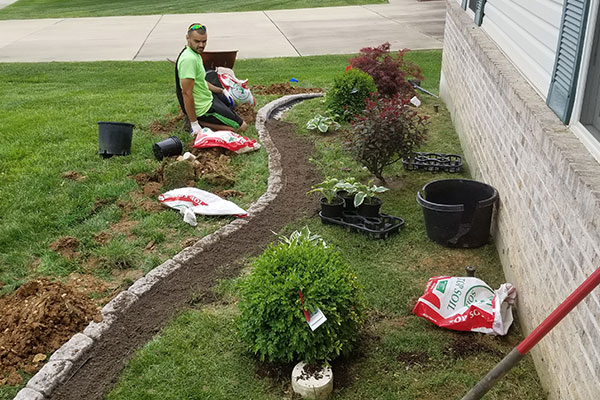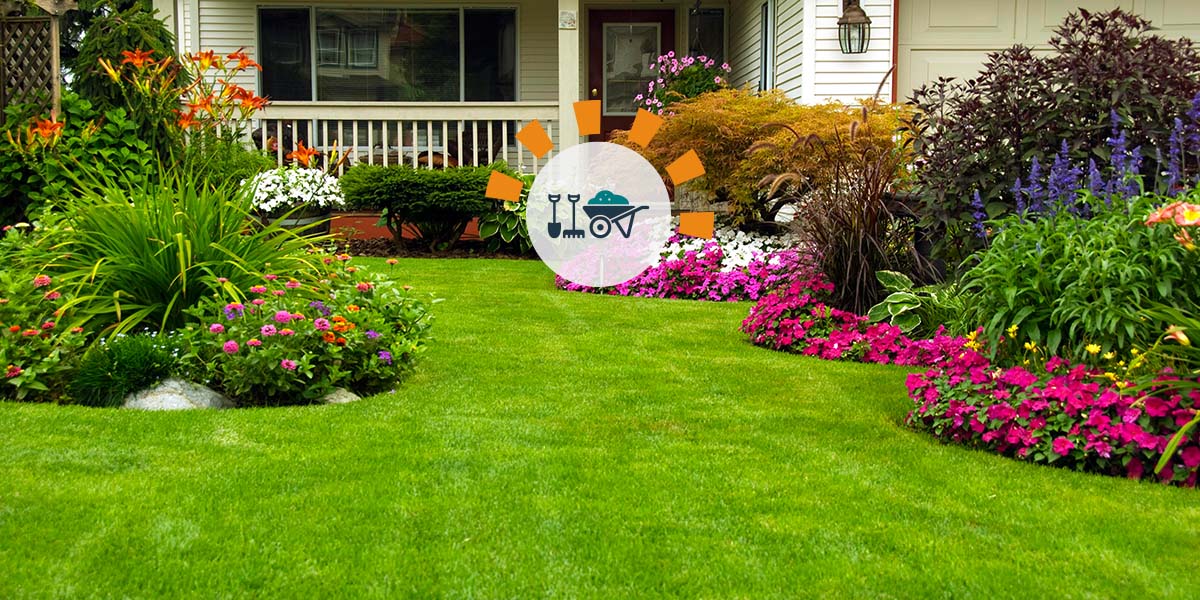Elevate Your Residential property's Visual With Sustainable Landscaping Layouts and Eco-Friendly Practices

Benefits of Sustainable Landscaping
Implementing lasting landscape design techniques not just preserves natural deposits but likewise promotes biodiversity and enhances general ecological health. By selecting eco-friendly landscape design methods, homeowner can reap a wide variety of benefits that extend beyond just aesthetic allure. One significant advantage is the reduction of water intake via making use of drought-resistant plants, rainfall gardens, and efficient irrigation systems. This not just lowers utility costs yet likewise adds to water conservation initiatives in the community.
In addition, lasting landscaping can boost soil health and wellness by decreasing making use of chemical plant foods and pesticides, therefore developing a healthier environment for plant growth and helpful soil microorganisms. This, consequently, enhances the total resilience of the landscape to stand up to environmental stressors and environment change influences - landscaping company Jacksonville. Additionally, lasting landscaping techniques can attract varied wild animals, consisting of pollinators like bees and butterflies, cultivating a much more vivid and balanced community within the property
Incorporating Indigenous Plants
To build upon the benefits of sustainable landscape design, a critical concentrate on including indigenous plants can better enhance environmental strength and advertise biodiversity within the landscape. Indigenous plants are varieties that normally take place in a particular area and have actually advanced to flourish in the neighborhood climate, soil problems, and ecosystem. By including native plants in landscaping designs, homeowner can lower water use, minimize the requirement for chemical pesticides and fertilizers, and support the local wild animals populace.
Integrating native plants likewise assists in maintaining the distinct character and identity of a region's flora. These plants typically need less upkeep as soon as developed, making them a sustainable and cost-effective landscaping option in the future. Furthermore, indigenous plants can bring in indigenous pollinators like butterflies and bees, adding to the total health and wellness of the environment.
When picking indigenous plants for landscaping projects, it is important to pick species that are appropriate to the specific environmental conditions of the site. Consulting with herb yards or neighborhood baby rooms can provide beneficial support on selecting the right native plants for a certain area. By integrating indigenous plants into landscape design layouts, homeowner can create beautiful, lasting outdoor rooms that benefit both the environment and the community.
.jpg)
Water Conservation Strategies
Reliable irrigation approaches play a critical function in lasting landscaping methods, making sure optimal water preservation initiatives in outside rooms. Leak watering delivers water directly to the origins of plants, decreasing dissipation and runoff.
Along with advanced watering approaches, xeriscaping is one more water-saving landscaping strategy that focuses on making use of drought-resistant plants, compost, and effective watering to develop a low-water landscape style - landscaping company Jacksonville. By picking native plants that are appropriate to the neighborhood environment and soil conditions, homeowner can lower the need for extreme watering, eventually preserving water and advertising a sustainable outdoor atmosphere
Eco-Friendly Hardscaping Ideas
Enhancing outdoor areas with green hardscaping features can contribute substantially to sustainable landscape design techniques. When considering hardscaping elements, choose products like recovered timber, recycled concrete, or all-natural rock to decrease environmental impact. These materials not only add an unique aesthetic charm to your outside area but also decrease the need for new sources removal.
Applying permeable leading choices such as gravel or permeable concrete can help in reducing water overflow and promote groundwater recharge. These alternatives allow rain to permeate into the ground, avoiding disintegration and minimizing the worry on stormwater systems.
Incorporating native plants right into hardscaping designs can further improve eco-friendliness by supporting neighborhood wildlife and lowering the demand for too much watering or chemical therapies. By including environment-friendly wall surfaces or upright yards, you can present extra plant life right into urban settings, improving air quality and biodiversity.
Including energy-efficient lighting, such as solar-powered LEDs, right into hardscaping layouts can reduce electrical power usage and lower your building's carbon footprint. Focusing on environment-friendly hardscaping concepts not only improves the beauty of your outside space but likewise shows a commitment to environmental stewardship.
Upkeep Tips for Sustainable Landscapes

On a regular basis prune plants to promote healthy and balanced development and prevent overgrowth that can cause pest illness or infestations. Use natural plant foods to nourish the dirt and plants without hazardous chemicals that can leach right into the environment. For hardscaping aspects, such as permeable pavers or rock pathways, routinely tidy them to avoid debris accumulation and keep their functionality. By remaining aggressive with upkeep jobs, you can protect the appeal and sustainability of your landscape for years to find.
Verdict
Finally, sustainable landscape design methods provide various advantages for residential or commercial property proprietors, from boosting the visual appeal of the environments to promoting environmental conservation. By including native plants, executing water preservation methods, and using environmentally friendly hardscaping concepts, homeowner can produce stunning landscapes that are additionally environmentally accountable. With proper upkeep, sustainable landscapes can prosper and contribute to a healthier environment for both humans and wildlife.
In addition, lasting landscape design can boost dirt health by decreasing the usage of chemical fertilizers and pesticides, thereby creating a much healthier setting for plant development and useful dirt microorganisms.To build upon the advantages of sustainable landscape design, a calculated focus on including native plants can additionally enhance environmental resilience and promote biodiversity within the landscape. By consisting of native plants in landscape design designs, property owners can reduce water use, decrease the demand for chemical pesticides and plant foods, and support the local wildlife population.
These plants usually call for much less upkeep once established, making them a lasting and cost-efficient landscaping option in the long run. By incorporating indigenous plants right into landscape design styles, building proprietors can develop lovely, description lasting exterior rooms that benefit both the atmosphere and the community.